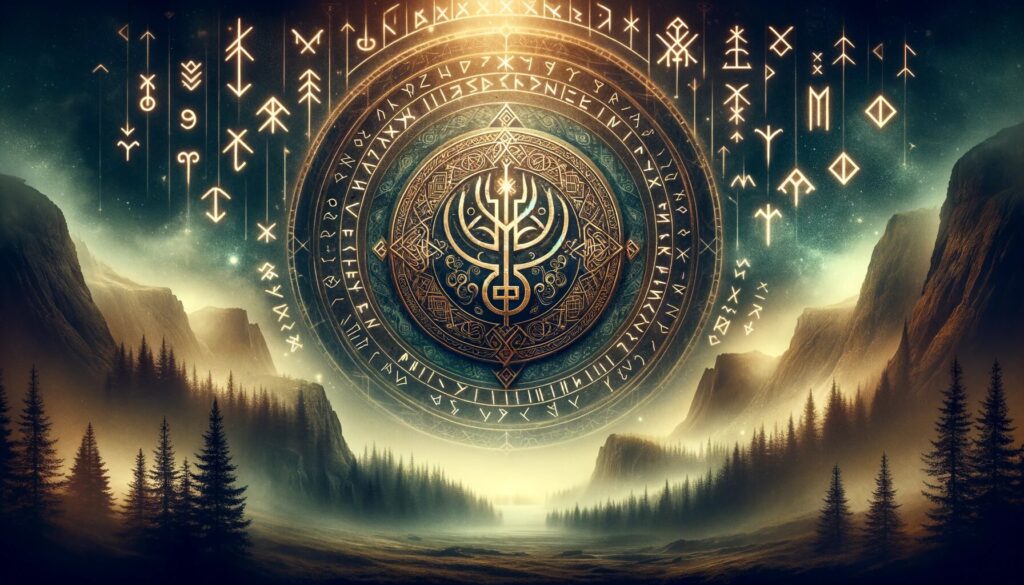Norse Mythology, Norse Symbols, Svefnthorn
Decoding the Svefnthorn: Symbolism and Interpretations in Norse Lore
Norse mythology is a rich tapestry of gods, heroes, and symbols that have captured the imaginations of people for centuries. One of the lesser-known but fascinating symbols in Norse lore is the Svefnthorn. This enigmatic symbol holds a unique place in mythology, with various interpretations and potential meanings. In this article, we will delve into the world of Norse mythology, explore the origins and symbolism of the Svefnthorn, and discuss the different interpretations associated with this intriguing symbol.
Origins of the Svefnthorn
To understand the significance of the Svefnthorn, we must first look at its origins within Norse mythology. The Svefnthorn is mentioned in a few ancient Norse sagas and texts, but its exact nature and purpose remain somewhat mysterious. The word “Svefnthorn” itself can be broken down into two parts: “svefn” meaning sleep, and “thorn” meaning thorn or spike. Therefore, the Svefnthorn is often referred to as the “sleep thorn” or “sleep thistle.”
The most notable mention of the Svefnthorn is in the “Völsunga Saga,” an epic Norse saga about the Volsung family. In the saga, a witch named Hjörþrimul gives the hero Sigurd a Svefnthorn to use against the dragon Fafnir. The Svefnthorn is intended to make Fafnir fall into a deep slumber so that Sigurd can slay him.
Symbolism of the Svefnthorn
Sleep and Dreams
The most obvious symbolism associated with the Svefnthorn is that of sleep and dreams. As the name suggests, it was believed to induce a deep sleep or even a magical slumber when used. In Norse mythology, dreams were considered a powerful means of communication between the mortal realm and the divine. By using the Svefnthorn, one could potentially access the world of dreams and receive guidance or prophetic visions.
Control over the Mind
The Svefnthorn also represents a form of control over the mind. In the Völsunga Saga, Sigurd uses the Svefnthorn to manipulate Fafnir’s state of consciousness, rendering the dragon vulnerable. This aspect of the symbol reflects the belief in the ability to influence and control the minds of others through magical means.
Protective Amulet
Another interpretation of the Svefnthorn is that it could be used as a protective amulet. Carrying or wearing a Svefnthorn pendant may have been believed to ward off evil spirits or protect the wearer from nightmares. This interpretation aligns with the broader use of symbols in Norse culture as protective charms against malevolent forces.
The Ritual Use of the Svefnthorn
Interpretations and Variations
The Svefnthorn’s mysterious nature has led to various interpretations and adaptations in modern times. Here are a few of the most prominent interpretations:
Hypnotic Symbol
In modern esoteric and pagan traditions, the Svefnthorn is often seen as a symbol of hypnosis or altered states of consciousness. It is believed to represent the power of the mind to induce trance-like states, access hidden knowledge, or explore the depths of one’s subconscious through meditation or guided visualization.
Symbol of Restful Sleep
In contemporary interpretations, the Svefnthorn is associated with promoting restful sleep and peaceful dreams. Some people use it as a charm or talisman to aid in sleep-related issues such as insomnia or nightmares. It is seen as a symbol of tranquility and relaxation.
Personal Transformation
The Svefnthorn can also be seen as a symbol of personal transformation and rebirth. Just as Sigurd’s use of the Svefnthorn led to the slaying of the dragon and a profound change in his destiny, individuals may use the symbol to represent their own journey of inner growth and transformation.
Mystical Powers and Mysteries
Modern Usage and Popularity
In recent years, there has been a resurgence of interest in Norse mythology and symbolism, thanks in part to popular culture, including movies, TV series, and video games. This renewed interest has brought the Svefnthorn into the spotlight, with many people incorporating it into jewelry, tattoos, and artwork.
The Svefnthorn’s versatility and enigmatic nature make it an appealing symbol for those who seek to explore its various interpretations and harness its potential for personal growth and empowerment.
Bottom Line
The Svefnthorn is a symbol that has captivated the imaginations of those interested in Norse mythology and esoteric symbolism. Its origins in the Völsunga Saga and its association with sleep, dreams, and control over the mind make it a multifaceted symbol with diverse interpretations.
Whether seen as a tool for inducing altered states of consciousness, a symbol of restful sleep, or a representation of personal transformation, the Svefnthorn continues to inspire and intrigue those who delve into the mysteries of Norse lore. As we continue to explore the rich tapestry of Norse mythology, symbols like the Svefnthorn remind us of the depth and complexity of this ancient tradition, offering new avenues for understanding and personal growth in the modern world.

